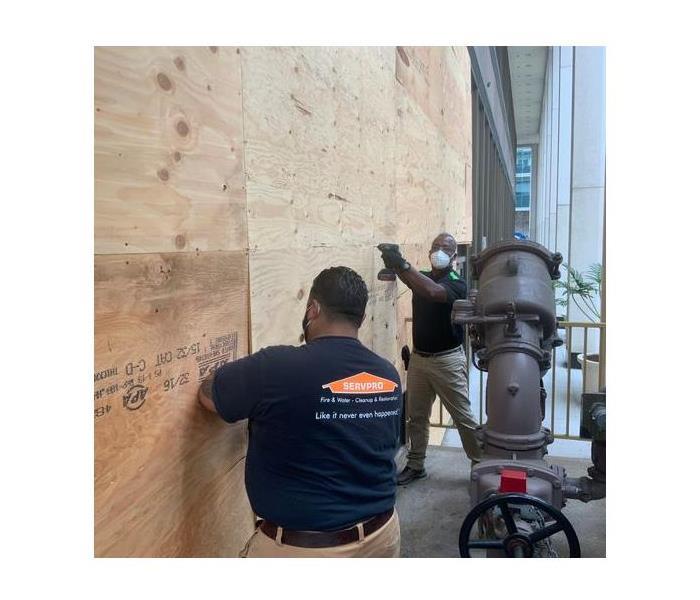How To Operate a Fire Extinguisher Safely
1/24/2022 (Permalink)
 SERVPRO is here for you for every step of the fire restoration process, from boarding up broken windows to reconstruction!
SERVPRO is here for you for every step of the fire restoration process, from boarding up broken windows to reconstruction!
A commercial fire in San Diego, CA is one of the most tragic and frightening things that can happen. Most business owners have an insurance policy to restore their assets in the event of a fire, but what about preventing it from destroying the building in the first place? By law, commercial buildings are equipped with a fire extinguisher, but many people aren’t sure how to use them or, just as important, when not to use them. Here are a few tips for avoiding excessive fire damage and knowing when to leave it to the fire department.
- Call the fire department if appropriate. A small kitchen fire isn’t necessarily a reason to call the fire department, but if the blaze has consumed more than a small amount of space, it’s better to call before you address the fire yourself. It’s also wise to contact a fire restoration professional.
- Identify a safe escape path before approaching the fire. Don’t allow yourself to become trapped before you attempt to fight the fire. Even while using the fire extinguisher, keep an eye on your path so you can make your escape before fire or smoke fills it.
- Make sure you’ve chosen the right kind of fire extinguisher. Contrary to what many assume, there are many variations of fire extinguishers intended for different fires. For example, a fire in ordinary combustibles such as paper, cloth and plastics requires water extinguishers labeled A. Fire extinguishers labeled B and C, however, are intended for flammable liquids and electrical equipment, respectively.
- Use the P.A.S.S. technique. Proper utilization of a fire extinguisher follows four simple steps. “P” stands for “pull” and refers to the pin that will break the tamper seal. “A” stands for “aim.” Make sure the hose is pointed low, at the base of the fire. The first “S” stands for “squeeze,” referring to the handle, which releases the flame retardant. The second “S” stands for “sweep,” referring to the side-to-side sweeping motion that may most effectively fight the fire. Continue this motion until the fire appears to be out. If the fire reignites, repeat the steps.





 24/7 Emergency Service
24/7 Emergency Service